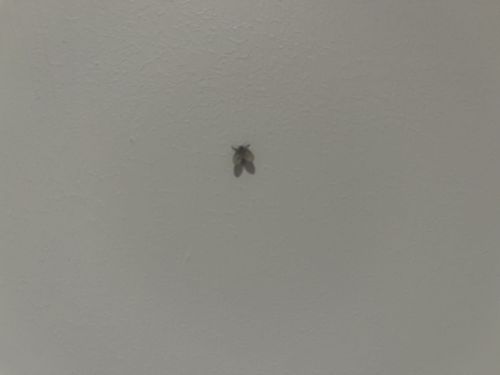Moth
Scientific Name: Too variable to specify from image (numerous species in various families within Lepidoptera)
Order & Family: Order: Lepidoptera, Family: Varies (e.g., Noctuidae, Geometridae, Pyralidae, Crambidae - general appearance suggests one of the smaller, common families)
Size: Highly variable, from a few millimeters (e.g., micro-moths) to over 30 cm wingspan (e.g., Atlas Moth). The moth in the image appears to be a smaller to medium-sized species, likely within the 1-5 cm wingspan range.

Natural Habitat
Moths can be found in a wide variety of habitats globally, from forests and grasslands to deserts and urban areas. Their specific habitat depends on the plant hosts of their larvae and the adult feeding preferences. They often seek shelter during the day in hidden places like under leaves, in crevices, or on walls.
Diet & Feeding
Adult moths often feed on nectar from flowers, fruit juices, tree sap, or decaying organic matter. Some adult moths do not feed at all and rely on energy reserves from their larval stage. Larvae (caterpillars) are typically herbivorous, feeding on leaves, stems, roots, or fruits of specific plants.
Behavior Patterns
Moths are typically nocturnal, active at night, and attracted to light sources. They undergo complete metamorphosis with four stages: egg, larva (caterpillar), pupa, and adult. Adults are primarily focused on reproduction. Many species display cryptic coloration to blend into their environment.
Risks & Benefits
Risks: Some moth larvae can be agricultural or household pests, damaging crops, stored food products, or fabrics (e.g., clothes moths). A few species can cause allergic reactions if touched. Benefits: Moths are important pollinators, especially for night-blooming flowers. Their larvae are a crucial food source for many animals, including birds, bats, and other insects. They are also indicators of environmental health.
Identified on: 8/12/2025